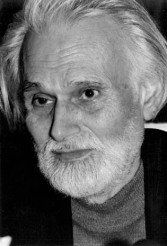Edward Michael
Edward Salim Michael was born on 30 November 1921 in Manchester (Great Britain). He spent his childhood in Iraq, which was then under British rule. He was about twelve years old when his parents left Baghdad for Syria, then for Egypt and for Palestine. His family returned to London just before World War II where he was drafted for military service. At that point Edward Michael had never been to school, could not read or write and barely spoke English. The Anglican Chaplain from his camp took an interest in him and taught him to read and write. The Chaplain's wife, who was violist in a string quartet, was surprised at Edward Michael's ability to memorize music. She decided to teach him the basics of composition. Two years later, his first orchestral work won a competition in London, where it was performed at the Royal Albert Hall by the London Philharmonic Orchestra conducted by John Hollingsworth.
After the war, he pursued his musical studies at the Guildhall School of Music and Drama in London where he worked with Berthold Goldschmidt, then with Matyss Seiber and also studied the violin with Max Rostal. In 1947, he won a first prize in orchestra conducting and started a career as a solo violinist. He gave numerous concerts before leaving for Paris in 1950 to study with Nadia Boulanger. Because of painful health problems he soon had to abandon the violin and conducting. From then onward, he devoted himself solely to composition.
Beside his work as a composer Edward Michael became more and more interested in spirituality and meditation. He travelled to India in the late 1960s and spent nearly seven years there. He returned to France in 1974, taught Yoga and published books on spirituality.
Edward Michael died on 28 November 2006 in Nice (France).
The work catalogue of Edward Michael contains mainly orchestral and chamber music. He composed works for orchestra as well as concertos for violin and for flute, among his chamber compositions are a string quartet, a violin sonata, several works for piano and Ondes Martenot.
In my possession is the autograph manuscript of a "Divertimento in 5 movements for piano". The Divertimento consists of the movements 1) The seeker, 2) The gathering, 3) The bringer of news, 4) Contemplation and 5) Rite. It first was titled "Suite" but that is crossed out and replaced through "Divertimento".
